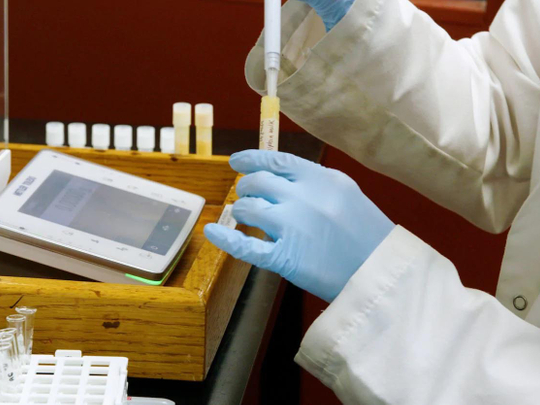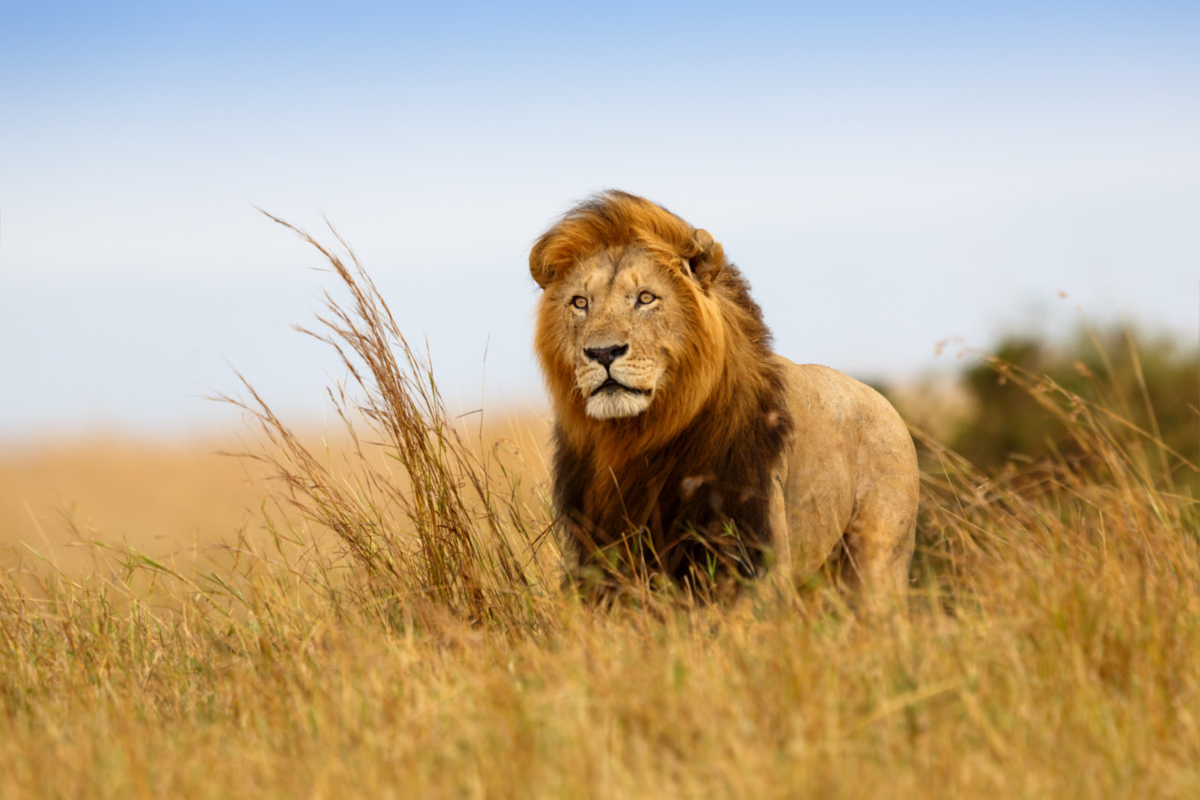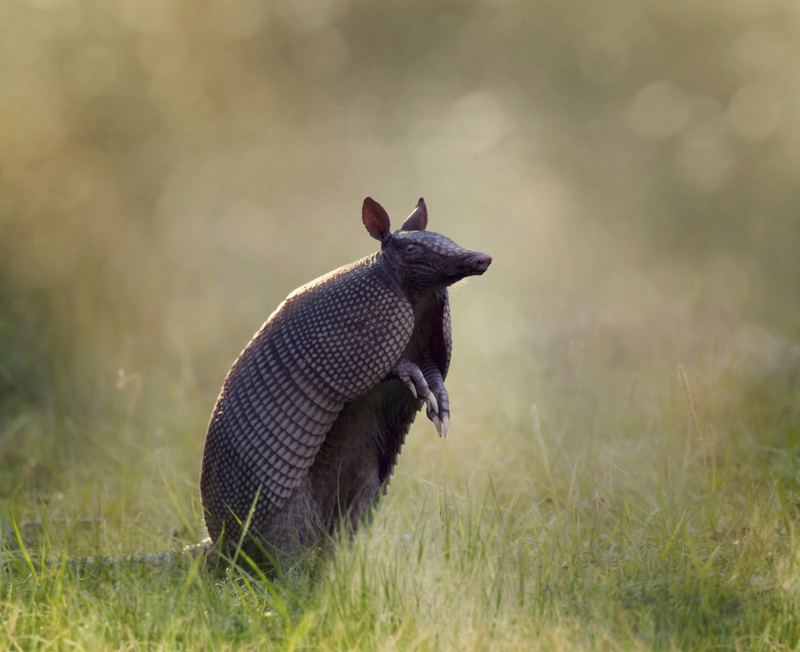
To milk an ape requires patience and peanuts.
Fortunately, National Zoo primate keeper Erin Stromberg has plenty of both as she approaches Batang, a 21-year-old Bornean orangutan, on a recent brisk morning.
Stromberg is there to retrieve a breast milk sample for the zoo’s exotic animal milk collection, the largest repository of its kind in the United States.
“Hello!” she calls, singsong, as the auburn-haired primate presses herself against the metal grate of her enclosure. Batang’s mouth is open, her lower jaw protruding; she knows what time it is. Stromberg hands her a peanut, then another, and Batang munches happily as shells accumulate on the floor. Her two-year-old son, a bouncing ball of fur named Redd, clambers over his mother’s back to beg a treat for himself.
“Hello, you go away,” the keeper says dismissively before giving him a nut. “Bye! See ya.”
She unscrews the cap of a small vial, then turns her attention to her charge. But Batang appears to have changed her mind, swinging away from the grate.
_resources1_16a0854b942_original-ratio.jpg)
“You can do it,” Stromberg says, her voice low and soothing. “You’ll be fine.”
Batang returns, slowly this time. She accepts several more peanuts from her keeper, then pushes her chest forward.
“That’s good, that’s good.” Stromberg holds her vial below Batang’s nipple and tugs gently until milk comes out. The orangutan continues to grab treats with one hand while gripping the side of the enclosure with the other.
There is something powerfully familiar about Batang’s wrinkled knuckles, opposable thumbs, and the intent gaze of her deep-set black eyes.
“Good, good girl,” Stromberg says.
After 15 minutes, there are just a few dribbles of milk in the vial. But Batang is looking antsy, and it’s important to Stromberg that this experiment be entirely voluntary. If Batang doesn’t feel like participating today, there’s always next time, and the time after that.
Batang has been donating small amounts of her breast milk every week for the last two years.
Each vial goes up the hill to the zoo’s nutrition lab, where it is stored in a massive deep freezer alongside samples from hundreds of other species: zebra, gorilla, black bear, African elephant, marmoset, armadillo, two-toed sloth.
On the same morning that Stromberg and Batang struggle with milking, scientists in the zoo’s nutrition lab are preparing a vial of bottlenose dolphin milk for analysis. The substance inside the test tube is bright orange and weirdly solid.
“It’s very high fat,” Mike Power, the Smithsonian scientist who curates this collection, explains, because a newborn dolphin’s first priority is to quickly grow a blubber layer. “More like butter than milk.”
Apparently, the dolphin milk also smells of fish.
With a centrifuge, a mass spectrometer, and other instruments, the zoo scientists separate each milk sample into its component parts. Their first objective is to determine the basic composition of milk from each species, which can reveal aspects of animals’ lifestyles and diets. Whereas dolphins and other marine mammals produce milk that is as much as 60 per cent fat, carnivores such as African lions give milk that is high in protein.
Animals that subsist on a diet of carbohydrate-rich plants feed their young milk that’s full of sugar.
Though humans eat plenty of meat, we fall into the latter category, a sign of our membership in the mostly herbivorous primate family.
Our mothers’ milk is about 7 per cent sugar, 1 per cent protein, 4 per cent fat, and half a per cent minerals like iron and calcium. The remainder is water.
Even though Power has studied milk from scores of species, the substance still has the capacity to surprise. When he collected his first samples from nine-banded armadillos, he was startled to discover the animals’ milk was 11 per cent protein and as much as 3.6 per cent minerals. These proportions seemed oddly high for a small insectivore — until he realised that infant armadillos likely used the nutrients to build their bony carapaces.
Is milk the perfect food?
Milk composition isn’t only about a baby’s needs. Sometimes, it’s a function of what a mother can provide.
“People say that milk is the perfect food,” Power says. “But really, it’s a compromise.”
Young animals would like the most nutrient-dense milk imaginable, but their mothers can only afford to devote so much energy to nurturing a child.
Biology also dictates how long a species lactates. Hooded seals, who give birth on unstable pack ice, need their offspring to grow up fast — after four days of nursing, babies double in size and are ready to be left on their own. Big-brained apes, on the other hand, develop slowly; Batang will nurse her son for as long as seven years.
Stromberg and Power hope to track the way Batang’s milk changes throughout this period — a defining time in mammalian development.
“There’s a whole set of biochemical communication in the placenta,” Power said. During nursing, “it becomes two-way.”
“Large parts of the mammalian babies’ development is coming from biochemical signals that are being produced in the milk,” he continued. Tracking these signals might reveal how mothers’ bodies respond to babies’ illnesses and other needs.
Understanding the inner workings of animals’ mammaries is more than just a fun biology question.
For animals in captivity, zookeepers’ ability to replicate their mothers’ milk could secure their survival.
Some day, animals’ milk may also help humans in unexpected ways
Several months ago, Power got a call from Connie Remoroza, a research chemist at the National Institute of Standards and Technology. Remoroza manages a library of biological sugars, which she scans for molecules with unique chemical properties. Some are powerful antimicrobials. Others may have industrial applications.
Remoroza wanted to know whether Power would be willing to contribute some of his samples to the cause.
He gave her a vial of African lion milk, which Remoroza carried back to Gaithersburg in her purse. A quick lab analysis revealed 40 sugars she’d never seen before.
“It is always so exciting to find something new,” she said. Who knows what other undiscovered molecules the zoo’s collection might reveal?
Back in the zoo’s primate house, Batang and Redd are blissfully unaware of their contributions to modern science. The infant orangutan has hidden inside an overturned laundry basket and is scooting around the floor — until his mother, with an outstretched arm, pulls him back to her.
Watching from the other side of the glass, a group of children and their mothers laugh in recognition. Milk is not the only thing we share.
Milk, explains Mike Power, the Smithsonian scientist who curates this collection, is mammals’ superpower. It’s full of nutritious fats and sugars that turn wobbly, helpless newborns into self-sufficient adults. It contains antibodies that increase infants’ chances of survival and hormones that help them grow. This powerful biochemical concoction carries clues to animals’ evolutionary past and hints about how they live today. Understanding what it’s made of may be the key to securing some species’ futures.
Yet even though milk is (or was) produced by all 6,495 members of the class Mammalia, scientists rarely study the substance except when it comes from cows, goats and humans.
Power and his colleagues aim to change that.
_resources1_16a0854b927_original-ratio.jpg)
When Fiona, the Cincinnati Zoo’s celebrated infant hippopotamus, was born 30 pounds (13.6kg) too light and six weeks premature last year, she was so weak she couldn’t even stand to suckle. So her keepers sent Power a sample of her mother’s milk to analyse, and he came up with a formula - lots of protein, a sprinkling of fat and sugar. Within a month she was drinking 20 bottles a day and had more than doubled her weight.
Dolphins
_resources1_16a0854b932_original-ratio.jpg)
Bottlenose dolphin milk is orange a weirdly solid as its high in fat, about 60 per cent, nearly like butter, so they grow a layer of blubber the first thing after being born.
African lionesses

They produce milk that is high in protein and has about 40 kinds of sugars not known in human milk.
Nine-banded armadillos

11% protein and as much as 3.6% minerals
Human mother’s milk
About 7% sugar, 1% protein, 4% fat, and 1.2% minerals like iron and calcium. The remainder is water.












